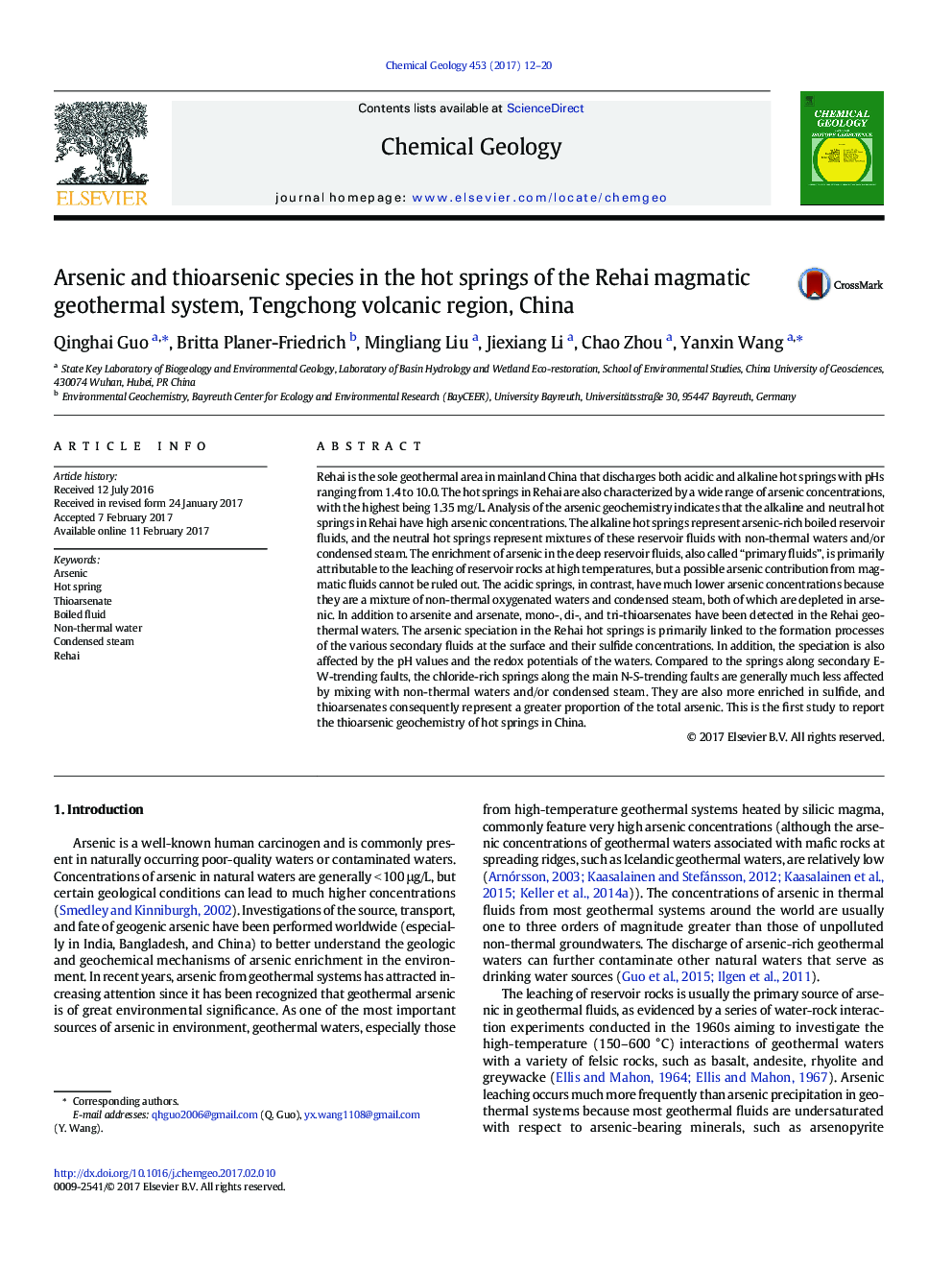| کد مقاله | کد نشریه | سال انتشار | مقاله انگلیسی | نسخه تمام متن |
|---|---|---|---|---|
| 5782907 | 1637521 | 2017 | 9 صفحه PDF | دانلود رایگان |
عنوان انگلیسی مقاله ISI
Arsenic and thioarsenic species in the hot springs of the Rehai magmatic geothermal system, Tengchong volcanic region, China
دانلود مقاله + سفارش ترجمه
دانلود مقاله ISI انگلیسی
رایگان برای ایرانیان
کلمات کلیدی
موضوعات مرتبط
مهندسی و علوم پایه
علوم زمین و سیارات
ژئوشیمی و پترولوژی
پیش نمایش صفحه اول مقاله

چکیده انگلیسی
Rehai is the sole geothermal area in mainland China that discharges both acidic and alkaline hot springs with pHs ranging from 1.4 to 10.0. The hot springs in Rehai are also characterized by a wide range of arsenic concentrations, with the highest being 1.35Â mg/L. Analysis of the arsenic geochemistry indicates that the alkaline and neutral hot springs in Rehai have high arsenic concentrations. The alkaline hot springs represent arsenic-rich boiled reservoir fluids, and the neutral hot springs represent mixtures of these reservoir fluids with non-thermal waters and/or condensed steam. The enrichment of arsenic in the deep reservoir fluids, also called “primary fluids”, is primarily attributable to the leaching of reservoir rocks at high temperatures, but a possible arsenic contribution from magmatic fluids cannot be ruled out. The acidic springs, in contrast, have much lower arsenic concentrations because they are a mixture of non-thermal oxygenated waters and condensed steam, both of which are depleted in arsenic. In addition to arsenite and arsenate, mono-, di-, and tri-thioarsenates have been detected in the Rehai geothermal waters. The arsenic speciation in the Rehai hot springs is primarily linked to the formation processes of the various secondary fluids at the surface and their sulfide concentrations. In addition, the speciation is also affected by the pH values and the redox potentials of the waters. Compared to the springs along secondary E-W-trending faults, the chloride-rich springs along the main N-S-trending faults are generally much less affected by mixing with non-thermal waters and/or condensed steam. They are also more enriched in sulfide, and thioarsenates consequently represent a greater proportion of the total arsenic. This is the first study to report the thioarsenic geochemistry of hot springs in China.
ناشر
Database: Elsevier - ScienceDirect (ساینس دایرکت)
Journal: Chemical Geology - Volume 453, 20 March 2017, Pages 12-20
Journal: Chemical Geology - Volume 453, 20 March 2017, Pages 12-20
نویسندگان
Qinghai Guo, Britta Planer-Friedrich, Mingliang Liu, Jiexiang Li, Chao Zhou, Yanxin Wang,